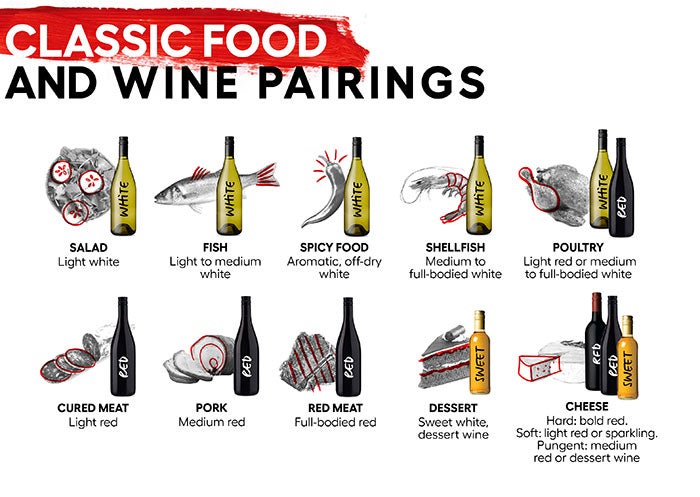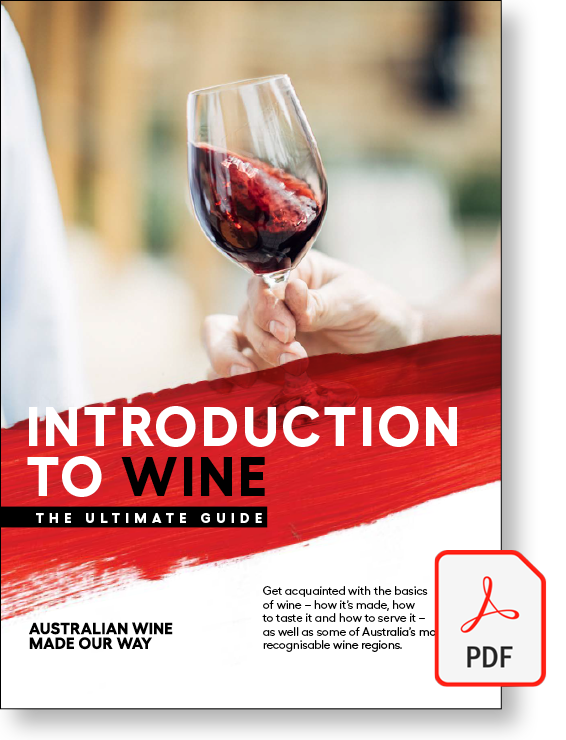The perfect food and wine match – you know it when you taste it, but making it happen can be tricky. In a good-quality restaurant, that’s a key part of the sommelier’s job.
“The ultimate aim of food and wine matching is to enhance the guest’s experience,” says sommelier Bhatia Dheeraj, who’s headed up wine programs and teams in some of the world’s best restaurants. “If you have a beautiful wine that really complements a beautiful dish, you might remember that for the rest of your life. And my job is done.”
At home, finding the right pairing can elevate a simple meal or dinner party into something much more exciting. There are no set-in-stone rules to food and wine matching, but there are some simple guidelines that can help you get it right.
“The most important thing is to be open-minded,” says Bhatia. “Explore and try new things, and you’ll be surprised by how much can be done with food and wine.”
Here are the five basic steps to finding the perfect food and wine pairing – all the way through to dessert.
Focus on the food
Think about the meal you’ll be serving and its components. Is it a heavy or light meal? What are the main flavours? Sometimes focusing on the sauce or dressing can be more important than the meat or vegetable itself. For example, roast chicken with a rich gravy calls for a different wine than grilled chicken with a zesty lemon and herb dressing.
Find the right balance
You want the food and wine to complement and enhance each other. So pair lighter foods with lighter wines, and heavier, richer dishes with more robust, full-bodied wines. For light vegetable and seafood dishes, crisp and refreshing white wines such as Sauvignon Blanc, Semillon and Riesling work well. At the other end of the spectrum, hearty tomato-based pastas, barbecued red meat or casseroles pair nicely with bold reds like Cabernet Sauvignon and Shiraz.
“Be careful not to match big wines with delicate flavours,” says sommelier and wine show judge Louella Mathews. “The more delicate the food, the more delicate the wine.”
Complement or contrast
Once you’ve got a sense of the weight of your food and wine, think about flavours. The main flavours in your food to focus on when choosing a wine are: sour/acidic, salty, spicy, sweet, savoury and bitter. You want a wine that’s going to balance the main flavour/s of the food, whether it’s spicy like a curry, salty like fried food, or acidic, such as a salad with a citrus dressing.
To find that balance, you have two options:
- A wine that complements the dish – this creates balance through similar flavour profiles. Pair a rich, creamy risotto with a buttery Chardonnay to enhance the creamy mouthfeel of both.
- A wine that contrasts with the dish – this creates balance by combining opposing qualities. Pair that same decadent risotto with a zesty Pinot Grigio or Sauvignon Blanc to cut through the richness.
Generally speaking, white wines and light-bodied reds like Pinot Noir and Grenache are the most food-friendly, while heavier reds work best with rich dishes that stand up to the wine’s bold flavours.
Spicy dishes can be the hardest to pair with wine. Aromatic, fruity or slightly sweeter styles such as Riesling and Grüner Veltliner work well because they balance the heat and complex flavours. Avoid wines with oak, strong tannins and high alcohol.
Finally, don’t discount sparkling wine – it’s surprisingly versatile when it comes to food pairings, working with everything from delicate seafood to fried chicken to fruit-based desserts and creamy cheeses.
“In food and wine pairing, opposites often attract,” says Louella. “If a dish is oily, fatty and rich, the brightness and freshness of a sparkling wine will counteract that.”

Think sweet for dessert
Go for a wine that’s sweeter than the dessert, otherwise the dessert will make the wine taste flat and dull. Think dessert wines, such as Botrytis Semillon and Botrytis Riesling, and opulent fortified styles such as Muscat and Tawny (Port).
Be careful when matching with cheese
Pairing wine with cheese can be harder than you think. Go with lighter wines for fresh cheeses, such as burrata and ricotta, and more robust wines for more intensely flavoured, aged cheeses. Strong, smelly cheeses like blue cheese work well with a sweet wine for balance, or even a fruity rosé.
“Cheese is very complex, with its different styles, textures and flavour profiles,” says Bhatia. “My favourite pairing is a nutty, aged Comté with an aged Chardonnay – they have great synergy.”
Below is a visual guide to some classic food and wine pairings. But remember: it’s not an exact science – ultimately, it’s all about what you enjoy.
“The rules for food and wine pairing are: there are no rules,” says Louella. “There are guidelines to follow, but they shouldn’t restrict your creativity. Experimentation is how the best food and wine matches come about.”
Ready to pour? Learn how to serve wine like an expert.
Want to know more?
Download ‘Introduction to wine: the ultimate guide’ and learn all about the basics of wine, including how it’s made, how to taste and serve it, and Australia’s top wine styles and regions.






